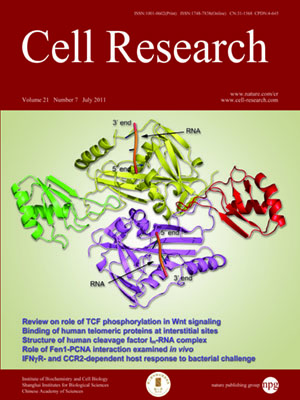
Volume 21, No 7, Jul 2011
ISSN: 1001-0602
EISSN: 1748-7838 2018
impact factor 17.848*
(Clarivate Analytics, 2019)
Volume 21 Issue 7, July 2011: 1131-1142
ORIGINAL ARTICLES
XerR, a negative regulator of XccR in Xanthomonas campestris pv. campestris, relieves its repressor function in planta
Li Wang1,2,3, Lili Zhang4, Yunfeng Geng5, Wei Xi1, Rongxiang Fang1,2 and Yantao Jia1,2
1State Key Laboratory of Plant Genomics, Institute of Microbiology, Chinese Academy of Sciences, No. 3 Yard 1 West Beichen Road, Chaoyang District, Beijing 100101, China
2National Plant Gene Research Center, Beijing 100101, China
3Graduate School of the Chinese Academy of Sciences, Beijing 100049, China
4Current address: Department of Internal Medicine, Yale School of Medicine, New Haven, CT 06510, USA
5Current address: Temasek Life Sciences Laboratory, 1 Research Link, The National University of Singapore, Singapore 117604, Singapore
Correspondence: Yantao Jia, Rongxiang Fang,(jiayt@im.ac.cn; fangrx@im.ac.cn)
We previously reported that XccR, a LuxR-type regulator of Xanthomonas campestris pv. campestris (Xcc), activates the downstream proline iminopeptidase virulence gene (pip) in response to certain host plant factor(s). In this report, we further show that the expression of the xccR gene was repressed in the culture medium by an NtrC-type response regulator, which we named XerR (XccR expression-related, repressor), and that this repression was relieved when the bacteria were grown in planta. Such a regulatory mechanism is reinforced by the observations that XerR directly bound to the xccR promoter in vitro, and that mutations at the phosphorylation-related residues of XerR resulted in the loss of its repressor function. Furthermore, the expression level of xccR increased even in XerR-overexpressing Xcc cells when they were vacuum infiltrated into cabbage plants. We also preliminarily characterized the host factor(s) involved in the above mentioned interactions between Xcc and the host plant, showing that a plant material(s) with molecular weight(s) less than 1 kDa abolished the binding of XerR to the xccR promoter, while the same material enhanced the binding of XccR to the luxXc box in the pip promoter. Taken together, our results implicate XerR in a new layer of the regulatory mechanism controlling the expression of the virulence-related xccR/pip locus and provide clues to the identification of plant signal molecules that interact with XerR and XccR to enhance the virulence of Xcc.
Cell Research (2011) 21:1131-1142. doi:10.1038/cr.2011.64; published online 12 April 2011
FULL TEXT | PDF
Browse 2151


